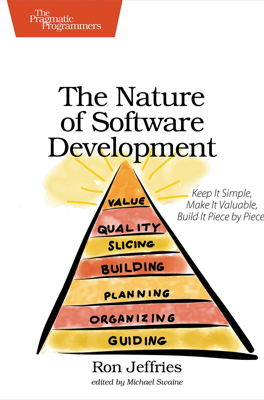Summary
The Nature of Software Development by Ron Jeffries emphasizes an incremental and value-driven approach to software project management, focusing on delivering small, tangible increments of software that align closely with user needs and business goals. Key strategies include prioritizing features based on value, regular testing, and minimal viable functionalities to adapt quickly and avoid waste.
The book underscores the importance of structuring teams around features rather than traditional roles or departments, enhancing efficiency in development and delivery. Cross-functional teams minimize delays and improve quality by integrating all necessary skills to complete feature sets without dependency on external groups.
The text advocates for a flexible planning approach and continuous quality improvement through rigorous testing and refactoring. These practices ensure the software remains functional, sustainable, and adaptable to changes over time. Additionally, it promotes a culture of learning and iteration within teams, continuously enhancing skills to meet the demands of rapid delivery cycles.
Ultimately, The Nature of Software Development provides guidance on maintaining simplicity in processes while managing the inherent complexities of software projects. It prepares teams to handle various scales of development by iterating quickly, learning from real feedback, and focusing relentlessly on delivering value efficiently.
Per-chapter summary
- The Search for Value
- Value Is What We Want
- Guiding Goes Better “Feature by Feature”
- Organizing by Feature
- Planning Feature by Feature
- Building the Product, Feature by Feature
- Build Features and Foundation in Parallel
- Bug-Free and Well Designed
- Full Circle
- Value—What Is It?
- Value—How Can We Measure It?
- Of Course It’s Hard!
- Not That Simple
- Creating Teams That Thrive
- The “Five-Card Method”for Initial Forecasting
- Managing Natural Software Development
- Whip the Ponies Harder
- To Speed Up, Build With Skill
- Refactoring
- Agile Methods
- Scaling Agile
- Conclusion
